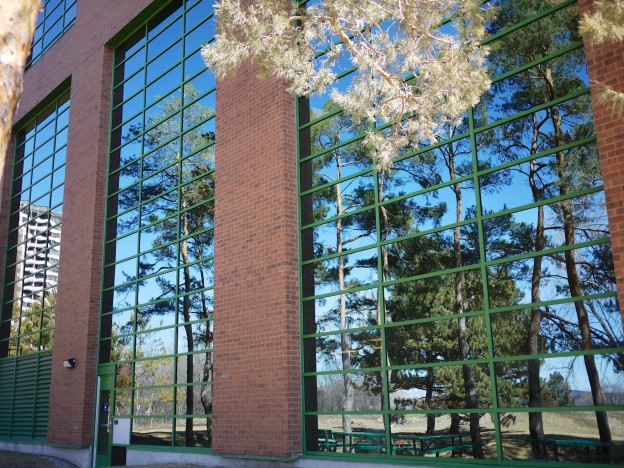One billion birds are estimated to be killed every year in North America by colliding with glass. An estimated 16 to 42 million of those deaths are in Canada, and perhaps 250,000 or more in Ottawa.
Why? Because birds do not understand glass as we do. Where we see reflections of trees, they simply see trees. Where we see a solid surface that separates indoors from out, they see open space.
The two main causes of collisions are:

Reflections
Birds are fooled by reflections of surrounding vegetation and sky. Mirrored glass is especially dangerous, but regular glass is also highly reflective depending on light conditions.
Clear glass
Many birds die trying to fly through glass or glass-like structures that offer an unobstructed view of vegetation or open sky on the other side. Examples include windows on opposite or adjacent sides of buildings, clear balcony railings, glass windscreens, glass walkways and linkways, and bus shelters. Birds seeking places to perch, eat or hide are also be attracted to indoor houseplants, green walls and other indoor vegetation that are visible through windows.
Other factors that influence the chances of birds colliding include:
Light pollution
Many birds migrate by night, using the moon and stars to navigate. Artificial lights disorient and confuse them, drawing them into the city. Once here, they can get “trapped” by bright lights just as insects do. Birds often flutter around brightly lit buildings and other light sources until they collide or drop to the ground from exhaustion. They may die there, or they roost in nearby trees to rest, then collide with buildings after the sun rises.

Time of year
Collisions occur throughout the year, but most are during spring and fall migration, when many more birds pass through our city. The Ottawa River is a major migratory route for many species.
Weather
Wind direction, temperature, air pressure and cloud cover affect migratory patterns and the altitude at which birds fly.
Other variables
The chances of colliding vary between species of birds, depending on how high and how fast they normally fly, as well as differences in vision. Migratory birds are more vulnerable because they are less likely to be familiar with human-built structures, and inexperienced juvenile birds are more likely to collide than mature ones.




